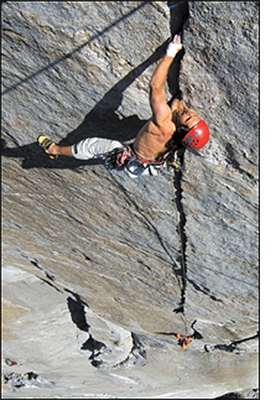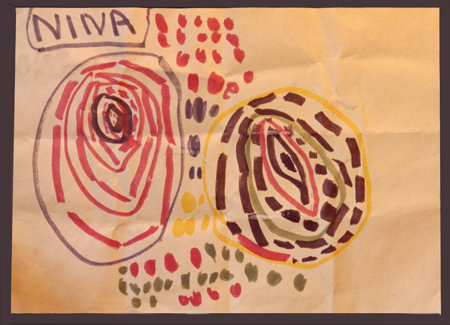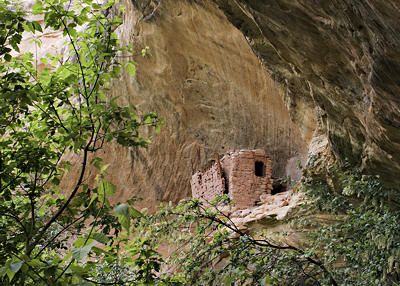Posted by Birgit Zipser on March 26th, 2007
The German weekly Die Zeit published this photo of the brothers Thomas and Alexander Huber climbing El Capitan in an article discussing ‘voracity for fear’. The occasion for the climb was a documentary ‘Am Limit’ by Pepe Danquart’s that opened on March 22, 2007 in Germany. (photo by Heinz Zak, published in Die Zeit 22.03.2007, Nr. 13).

Being a junkie for perspective, this photo caught my eye. Do you have any photos or links for photos of interesting perspectives?
Posted by Richard Rothstein on March 25th, 2007
From the mid 1970s until the late 1990s, the Times Square area hosted three completely illegal, outrageous and brazen gay whore houses: The Gaiety, Show Palace and Eros. Show Palace and Eros survived until the late 90s, The Gaiety hung on–thanks to the patronage of many influential and prominent Manhattanites–through March of 2005. But even with the patronage of icons of the New York performing arts world and several entertainment industry moguls, the Internet ultimately proved to be too fierce of a competitor and Denise the very professional and always courteous Greek lady who owned this establishment shuttered the doors, collected her Drachmas and retired to Lesbos (not actually Lesbos, but you get the idea) after 30 years of peddling boys to men.

The cover story that allowed the authorities to turn a blind eye to these whorehouses was simple. They were not whorehouses; they were burlesque houses where boys would strip, dance and display their merchandise. No liquor was served and the”theaters” fell under the protection of Off-Broadway regulations.
more… »
Posted by Birgit Zipser on March 23rd, 2007
In the 1960’s, parents were admonished to keep their toddlers in bathing trunks by a sign on Jones beach created by Robert Moses. In contrast, healing diaper-sore bottoms on the beach is luxury for European children. ‘Nakedei’ is an affectionate German term for a naked toddler.

more… »
Posted by Angela Ferreira on March 20th, 2007

Title: Scrying
Medium: Pencil & Oil on canvas
Size: 140 x 78 cm
This painting was made with a technique I have discovered by reading posts from both Karl Zipser’s and Hanneke’s methods.
I have drawn directly from a combination of life and imagination on to the canvas, shading to some extent and completing it mostly.
When the drawing was absolutely right, then I covered the picture with thin layers of oil mixed with diluents to show some of the transparencies.
I finally overworked to the top leaving some parts of the pencil showing through and some other parts built up with colour and tone.

Posted by Doug Plummer on March 20th, 2007

Photographing the Big Sur coast can be daunting. There’s the pesky issue of it being so spectacular. Every turnout looks like a Sierra Club calendar photo. How do I make make something of my own from these environs? What I found out was, to not try very hard at any of it. I found that a sort of creative indirection was the best way to handle the gorgeous scenery.
It is not my first trip to the region. About a decade ago, I got myself a 4×5 camera. The intent was to do a “beginner’s mind” thing with my photography, start over with an unfamiliar technology and see what kind of pictures I would make if I had to compose them upside down and under a dark cloth. I was very intent on what I was doing. I had a plan and a purpose. In the end, I made the expected sort of photographs you get when you trundle around the central California coast with a 4×5. After about three years I figured out that large format was not advancing my photography anywhere I wanted it to go, and I went back to smaller formats.
Another trip I did with stock photography in mind. Those spectacular pullouts on Highway One were the point, as were the forests and the towns and the tourist destinations. I had a plan, and a place for the photographs.
This time, I had no plan. I responded to the whim of my inner compass as Robin and I drove from LA to SF. In southern California I wandered slowly through the brushy canyons, when I wasn’t making photos inside of art museums. Morro Bay was about empty water and sky. At Pfeiffer Beach, I turned my back on the surf and rocks and headed for the blown down mess of cypress trees behind the dunes. It was hard, unrelenting sunlight, the worst sort of conditions for this kind of environment. I messed around without expecting too much from it. At the state parks in Big Sur I birded along the rivers, casually shooting where I was, without a deep fixation on anything in particular. Sometimes I did become fixated; I had great fun on Weston Beach in Pt. Lobos, pretending I was channelling Edward Weston himself making poignant, pregnant abstractions. I even let myself photograph the spectacular views, on a tripod and with a polarizer filter. Hey, might as well do it right.
A great thing about an aimless trip of this sort is that the pressure’s off. Image making is still the compelling activity, but there is a deliberate purposelessness about the effort. It allows me to do that most important work of an artist—to fail a lot. I explored a lot of visual dead ends, I made abundant bad pictures, I responded to what was around me, but most of those responses missed the mark. I joke with my clients that I’m a good photographer because I’m a bad photographer a lot more often. It’s more true for most of us than we might like to admit. On a trip like this, I can afford to indulge these apparently fruitless explorations.
It is important work nonetheless. This is where what’s next happens. Sam Abell, a mentor of mine, puts it as “shooting ahead of ourselves.” The dominant theme in my work now started unrecognized while I was busy with something else. One of my dead ends might become an important part of my work henceforth. Or not. My job is to indulge the aimlessness whenever I have the opportunity. It’s like the basic rule of investing—make sure you have a diversified portfolio. I am adding to the savings account on a trip of this sort. The return will come sometime when I don’t expect it.

Posted by Richard Rothstein on March 18th, 2007

The Arts section of today’s The New York Times examines the strange history and odd future of an artist considered to be one of the geniuses of the 20th Century and possibly the greatest of the Abstract Expressionists. Ironically, he remains–by design–virtually unknown to the general public and this despite the fact that he may have been even more prolific than Picasso.

For those of you unfamiliar with Clyfford Still, he is most certainly the ultimate manifestation of an artist’s contempt for commercialism, museums, galleries and collectors. He is famous for denouncing the galleries and museums of the art world as Nazi gas chambers. After a brief period of selling and displaying some of his work, Still retreated to a remote farm in Maryland and spent the remaining decades of his life painting furiously, cursing critics and the commercial art world and hiding his work. In a one page will he specified that his body of work could never be sold, never be separated, never be shown next to another artist’s work and could only be shown to the pubic in a Clyfford Still museum that would be built by an American city and would exclusively house his entire collection.

more… »
Posted by Steve Durbin on March 13th, 2007

It is said you can never step into the same river twice. The river flows on, the world changes. But I have a chance next month to return to Anasazi country where I photographed a year ago, and water seldom flows there at all. Conditions will probably be much the same, unless there’s a break from the hot, clear weather of last time. I will probably see some of the same ruins I photographed before, but I’m sure to see others as well. I am very interested to see what will come out of a return visit.
more… »










